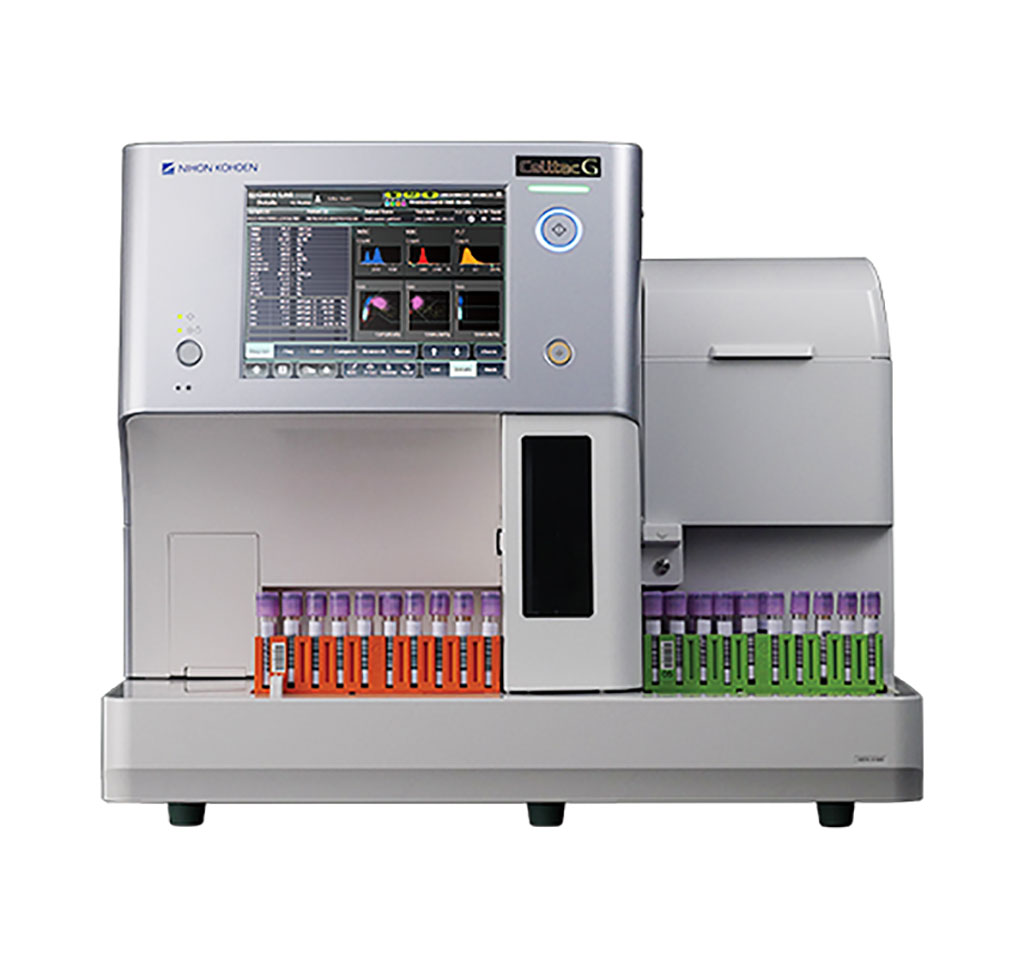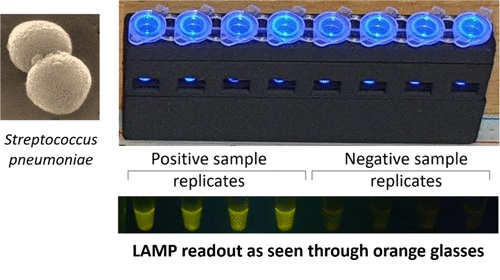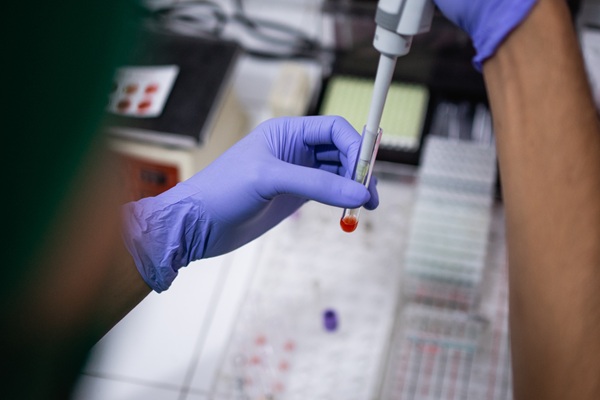Leukocyte Differential on Hematology Analyzer Compared and Evaluated
|
By LabMedica International staff writers Posted on 21 Jun 2021 |

Image: The Celltac G fully-automatic hematology analyzer with 33 parameters (Photo courtesy of Nihon Kohden)
A complete blood count (CBC), also known as a full blood count (FBC), is a set of medical laboratory tests that provide information about the cells in a person's blood. The CBC indicates the counts of white blood cells, red blood cells and platelets, the concentration of hemoglobin, and the hematocrit (the volume percentage of red blood cells).
Different hematology analyzer models use various principles to measure the complete blood count (CBC) and leukocyte differential for routine tests in clinical laboratories. The accuracy performance of a hematology analyzer is evaluated using the manual differential leukocyte (Manual-Diff) on blood wedge film (Wedge-Diff) as the traditional reference method.
Clinical Laboratorians at the Kindai University Hospital (Osakasayama, Japan) selected for method comparison, 598 clinical samples and 46 healthy volunteer samples. All samples were collected in tubes containing K2-EDTA. The blood collection tubes, blood collection procedure, and mixing procedure were according to described methods. For method comparison between the three analyzers, 388 clinical samples were used. Blood films were stained with May-Giemsa.
The automated hematology analyzer Celltac G (Nihon Kohden, Tokyo, Japan) was designed to improve leukocyte differential performance. The two comparative hematology analyzers (CAAs) used were XN-9000 (Sysmex, Kobe, Japan) and CELL-DYN Sapphire (Abbott Diagnostics, Santa Clara, CA, USA). In manual differential, two kinds of automated slide makers were used: the Sysmex SP-10 for wedge technique and SPINNER-2000 (Lion-Power, Komatsu, Japan) for spinner technique. The immunophenotypic leukocyte differential reference method (FCM-Ref) was selected, and a flow cytometer Navios (Beckman-Coulter, Indianapolis, IN, USA) was used.
The investigators reported that the Celltac G showed sufficient comparability with the CAAs for each leukocyte differential counting value up to 40.87 × 109/L, and sufficient comparability with FCM-Ref for each leukocyte differential percentage at 0.4–78.5. The identification ratio of the FCM-Ref in CD45-positive cells was 99.7% (99.4% to 99.8%). Differences were found between FCM-Ref/Celltac G/XN-9000/Spinner-Diff and Wedge-Diff for monocytes and neutrophils. The appearance ratio of smudge cells on wedge and spinner film was 12.5% and 0.5%.
The authors concluded that the Celltac G hematology analyzer's leukocyte differential showed adequate accuracy compared with two comparative hematology analyzers, reference flow cytometry method, and two manual methods and was considered suitable for clinical use. The study was published on June 12, 2021 in the Journal of Clinical Laboratory Analysis.
Related Links:
Kindai University Hospital
Nihon Kohden
Sysmex
Abbott Diagnostics
Lion-Power
Beckman-Coulter
Different hematology analyzer models use various principles to measure the complete blood count (CBC) and leukocyte differential for routine tests in clinical laboratories. The accuracy performance of a hematology analyzer is evaluated using the manual differential leukocyte (Manual-Diff) on blood wedge film (Wedge-Diff) as the traditional reference method.
Clinical Laboratorians at the Kindai University Hospital (Osakasayama, Japan) selected for method comparison, 598 clinical samples and 46 healthy volunteer samples. All samples were collected in tubes containing K2-EDTA. The blood collection tubes, blood collection procedure, and mixing procedure were according to described methods. For method comparison between the three analyzers, 388 clinical samples were used. Blood films were stained with May-Giemsa.
The automated hematology analyzer Celltac G (Nihon Kohden, Tokyo, Japan) was designed to improve leukocyte differential performance. The two comparative hematology analyzers (CAAs) used were XN-9000 (Sysmex, Kobe, Japan) and CELL-DYN Sapphire (Abbott Diagnostics, Santa Clara, CA, USA). In manual differential, two kinds of automated slide makers were used: the Sysmex SP-10 for wedge technique and SPINNER-2000 (Lion-Power, Komatsu, Japan) for spinner technique. The immunophenotypic leukocyte differential reference method (FCM-Ref) was selected, and a flow cytometer Navios (Beckman-Coulter, Indianapolis, IN, USA) was used.
The investigators reported that the Celltac G showed sufficient comparability with the CAAs for each leukocyte differential counting value up to 40.87 × 109/L, and sufficient comparability with FCM-Ref for each leukocyte differential percentage at 0.4–78.5. The identification ratio of the FCM-Ref in CD45-positive cells was 99.7% (99.4% to 99.8%). Differences were found between FCM-Ref/Celltac G/XN-9000/Spinner-Diff and Wedge-Diff for monocytes and neutrophils. The appearance ratio of smudge cells on wedge and spinner film was 12.5% and 0.5%.
The authors concluded that the Celltac G hematology analyzer's leukocyte differential showed adequate accuracy compared with two comparative hematology analyzers, reference flow cytometry method, and two manual methods and was considered suitable for clinical use. The study was published on June 12, 2021 in the Journal of Clinical Laboratory Analysis.
Related Links:
Kindai University Hospital
Nihon Kohden
Sysmex
Abbott Diagnostics
Lion-Power
Beckman-Coulter
Latest Hematology News
- ADLM’s New Coagulation Testing Guidance to Improve Care for Patients on Blood Thinners
- Viscoelastic Testing Could Improve Treatment of Maternal Hemorrhage
- Pioneering Model Measures Radiation Exposure in Blood for Precise Cancer Treatments
- Platelets Could Improve Early and Minimally Invasive Detection of Cancer
- Portable and Disposable Device Obtains Platelet-Rich Plasma Without Complex Equipment
- Disposable Cartridge-Based Test Delivers Rapid and Accurate CBC Results
- First Point-of-Care Heparin Monitoring Test Provides Results in Under 15 Minutes

- New Scoring System Predicts Risk of Developing Cancer from Common Blood Disorder
- Non-Invasive Prenatal Test for Fetal RhD Status Demonstrates 100% Accuracy
- WBC Count Could Predict Severity of COVID-19 Symptoms
- New Platelet Counting Technology to Help Labs Prevent Diagnosis Errors
- Streamlined Approach to Testing for Heparin-Induced Thrombocytopenia Improves Diagnostic Accuracy
- POC Hemostasis System Could Help Prevent Maternal Deaths
- New Test Assesses Oxygen Delivering Ability of Red Blood Cells by Measuring Their Shape
- Personalized CBC Testing Could Help Diagnose Early-Stage Diseases in Healthy Individuals
- Non-Invasive Test Solution Determines Fetal RhD Status from Maternal Plasma
Channels
Clinical Chemistry
view channel
VOCs Show Promise for Early Multi-Cancer Detection
Early cancer detection is critical to improving survival rates, but most current screening methods focus on individual cancer types and often involve invasive procedures. This makes it difficult to identify... Read more
Portable Raman Spectroscopy Offers Cost-Effective Kidney Disease Diagnosis at POC
Kidney disease is typically diagnosed through blood or urine tests, often when patients present with symptoms such as blood in urine, shortness of breath, or weight loss. While these tests are common,... Read moreMolecular Diagnostics
view channel
New Diagnostic Method Detects Pneumonia at POC in Low-Resource Settings
Pneumonia continues to be one of the leading causes of death in low- and middle-income countries, where limited access to advanced laboratory infrastructure hampers early and accurate diagnosis.... Read more
Blood Immune Cell Analysis Detects Parkinson’s Before Symptoms Appear
Early diagnosis of Parkinson’s disease remains one of the greatest challenges in neurology. The condition, which affects nearly 12 million people globally, is typically identified only after significant... Read moreImmunology
view channel
Blood-Based Liquid Biopsy Model Analyzes Immunotherapy Effectiveness
Immunotherapy has revolutionized cancer care by harnessing the immune system to fight tumors, yet predicting who will benefit remains a major challenge. Many patients undergo costly and taxing treatment... Read more
Signature Genes Predict T-Cell Expansion in Cancer Immunotherapy
Modern cancer immunotherapies rely on the ability of CD8⁺ T cells to rapidly multiply within tumors, generating the immune force needed to eliminate cancer cells. However, the biological triggers behind... Read moreMicrobiology
view channel
High-Throughput Enteric Panels Detect Multiple GI Bacterial Infections from Single Stool Swab Sample
Gastrointestinal (GI) infections are among the most common causes of illness worldwide, leading to over 1.7 million deaths annually and placing a heavy burden on healthcare systems. Conventional diagnostic... Read more
Fast Noninvasive Bedside Test Uses Sugar Fingerprint to Detect Fungal Infections
Candida bloodstream infections are a growing global health threat, causing an estimated 6 million cases and 3.8 million deaths annually. Hospitals are particularly vulnerable, as weakened patients after... Read morePathology
view channel
New Molecular Analysis Tool to Improve Disease Diagnosis
Accurately distinguishing between similar biomolecules such as proteins is vital for biomedical research and diagnostics, yet existing analytical tools often fail to detect subtle structural or compositional... Read more
Tears Offer Noninvasive Alternative for Diagnosing Neurodegenerative Diseases
Diagnosing and monitoring eye and neurodegenerative diseases often requires invasive procedures to access ocular fluids. Ocular fluids like aqueous humor and vitreous humor contain valuable molecular information... Read moreTechnology
view channel
Cell-Sorting Device Uses Electromagnetic Levitation to Precisely Direct Cell Movement
Sorting different cell types—such as cancerous versus healthy or live versus dead cells—is a critical task in biology and medicine. However, conventional methods often require labeling, chemical exposure,... Read more
Embedded GPU Platform Enables Rapid Blood Profiling for POC Diagnostics
Blood tests remain a cornerstone of medical diagnostics, but traditional imaging and analysis methods can be slow, costly, and reliant on dyes or contrast agents. Now, scientists have developed a real-time,... Read moreIndustry
view channel
Qiagen Acquires Single-Cell Omics Firm Parse Biosciences
QIAGEN (Venlo, Netherlands) has entered into a definitive agreement to fully acquire Parse Biosciences (Seattle, WA, USA), a provider of scalable, instrument-free solutions for single-cell research.... Read more
Puritan Medical Products Showcasing Innovation at AMP2025 in Boston
Puritan Medical Products (Guilford, ME, USA), the world’s most trusted manufacturer of swabs and specimen collection devices, is set to exhibit at AMP2025 in Boston, Massachusetts, from November 11–15.... Read more
Advanced Instruments Merged Under Nova Biomedical Name
Advanced Instruments (Norwood, MA, USA) and Nova Biomedical (Waltham, MA, USA) are now officially doing business under a single, unified brand. This transformation is expected to deliver greater value... Read more























